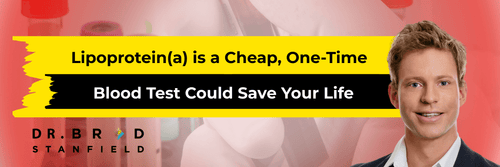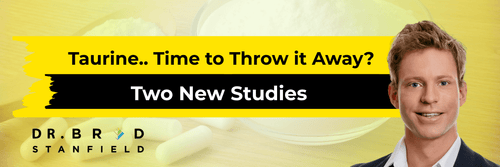It’s a nearly $3 billion market and growing fast. IV therapy clinics—where you can get cocktails of vitamins and other nutrients dripped directly into your veins—are supposed to do everything from detoxing our systems to fighting aging. But a new article in the respected medical journal JAMA highlights some concerns [1].

So let’s take a look at the potential benefits along with an honest assessment of the risks.
Table of Contents
The Trend
IV clinics are driving billions in revenue [1]. These IV hydration spas are a growing segment of the booming medical spa market, which in 2022 was a $15 billion industry with nearly 9,000 facilities.
Most treatments combine electrolytes with a mix of vitamins and other nutrients. Take this chain of infusion clinics in the U.S., for instance. They list IV infusions intended to increase energy, speed recovery, boost immunity, and more [2].

They also offer an NAD+ IV drip that’s touted for its anti-aging and cellular repair benefits [3].

If we look at a specific infusion example, like “Defender,” we can see what it includes. In addition to a base saline solution, there’s glutathione, B12, taurine, lysine, vitamin C, and zinc. The claimed impact? It’s pretty vague. It’s meant to “keep our system resilient and ready for anything” [2].

Here’s the crucial question: Do we have good reason to think these infusions will actually work as advertised? The interesting thing about the language used by many IV clinics is that it’s sneakily worded to avoid promising anything very specific. In the example above, it’s not clear what it would even mean for our system to be “ready for anything.”
But you can see that each ingredient is tagged with a proposed benefit that’s more specific. So let’s take a look at some of those.

Do IV Infusions Actually Work?
Taurine
Consider taurine, for example. Is it really linked to heart health?
An important study published last year looked at how taurine supplements impacted metrics related to metabolic syndrome. Metabolic syndrome is a cluster of interconnected risk factors that significantly increase the likelihood of cardiovascular disease, type 2 diabetes, strokes, and chronic inflammation [4].

The authors conducted a meta-analysis of randomized clinical trials—25 trials involving over 1,000 participants—and found that taurine decreased fasting blood sugar levels, blood pressure, triglycerides, LDL cholesterol, HbA1c, and insulin levels [4].
And that’s why I include taurine in MicroVitamin. But all this data is for taking taurine orally. There’s no reason to think IV delivery is needed to see these benefits.
I’m not going to go through each ingredient. We would see something similar for many of them. They’re not picked arbitrarily—they’re being guided, to some extent, by experimental findings.
But we can’t assume the effects of an oral supplement and one given intravenously will be identical. Typically, we can deliver a much higher dose via IV compared to oral supplements. And an ingredient might help at one dose, do nothing at another, and cause harm at yet another level.
What we want, in order to have confidence in benefits, is a dose and delivery method backed up by clinical trials. So do we have that for these IV infusions?
Certainly not for taurine infusions. But there is some evidence for vitamin C, which is also included in the “Defender” infusion cocktail and is available as a standalone infusion.

Vitamin C
Interest in vitamin C infusions began in the 1970s in relation to treating cancer, with some promising results from early studies and case reports. One trial, for instance, found that the average survival time in cancer patients who received vitamin C was 4.2 times that of those who didn’t [5].

Later, researchers explored the causal connection. Studies in the lab showed that high vitamin C concentrations could inhibit growth in cancer cells, and the same effect was found in animal models [6].
So why not just take it orally? The key advantage to IV delivery is that oral vitamin C produces plasma concentrations that are tightly controlled. Only intravenous administration produces high plasma and urine concentrations that might have antitumor activity [7].
But all the vitamin C infusion studies so far are small, and we certainly don’t have a high enough level of evidence to recommend it for cancer treatment or prevention. The same goes for claims about treating fatigue.
There are a number of clinical trials happening right now, and I’ll let you know the results as they are published [8].
On the other hand, there are known risks. People with a history of kidney disease have developed kidney failure after IV vitamin C. There are increased risks of kidney stones, fluid overload, and hemolysis, which is when red blood cells are broken down [8].
One study even found that among 872 ICU patients, those who received IV vitamin C had a higher risk of death or persistent organ dysfunction compared to those who received a placebo [9].
If we go back to the ingredient list for the “Defender” cocktail, I personally wouldn’t get it or recommend it to my patients because there’s a lack of evidence of benefit, and there are known harms.
NAD+
The final infusion I want to look at is NAD+. This is a crucial molecule found in our cells that plays a role in energy production, DNA repair, mitochondrial biogenesis, and cellular survival [10].

It’s touted by infusion clinics for anti-aging benefits, but studies on the benefits of trying to boost NAD+ levels usually involve supplementing with its precursors, not NAD+ itself. These precursors can raise NAD+ levels and show promising health effects in animal models [10].
In humans, however, results so far have been disappointing [10].
But what we’re most interested in are studies where NAD+ is delivered intravenously. The first study to test this was published in 2019. Researchers found that no change in plasma levels of NAD+ occurred until after 2 hours of infusion [11]. That’s because the NAD+ was “rapidly and completely” removed from the blood for at least the first 2 hours [11].
This is likely because the NAD+ was broken down into its building blocks [11].
The NAD+ molecule itself is too large to be absorbed directly from the bloodstream into cells. So the underlying idea of NAD+ IV infusions is flawed.
And there were worrying adverse effects. Most participants experienced nausea, headache, diarrhea, and muscle tightness during treatment [12].
More seriously, the NAD+ infusion group showed clinically significant indications of inflammation, including elevated white blood cell and neutrophil counts [12].
The researchers summed it up well: “Despite its popularity, the science behind the safety and efficacy of NAD+ IV is minimal” [12].
This is what we often see with IV clinics: promoters start with a substance that has benefits in cell or animal studies, then proclaim clinical benefits for healthy adults through an IV infusion—even though, in most cases, there’s practically no clinical evidence backing it up.
Risks and Costs
Now there’s an obvious objection at this point: Okay, so we don’t have solid evidence about the effectiveness of these treatments. But they might work, so why not try it?

The problem is that while we’re unsure of benefits, there are very real risks.
- Overdose risk: Even helpful nutrients can be harmful in high doses. This is especially true with fat-soluble vitamins like D, E, and K, which can accumulate and lead to toxicity [13].
- Fluid/electrolyte issues: Improper fluid infusion can cause electrolyte imbalances or fluid overload, which can negatively impact heart and kidney function [13].
- Allergic reactions: Individuals might be sensitive to ingredients in the infusion, with risks ranging from mild symptoms to severe anaphylaxis [13].
- Microplastics: IV infusions can directly introduce microplastics into the body, which may have harmful medical repercussions [14].
- Procedure risks: Inserting needles into veins always carries risk. Infection is a serious concern, especially when sterile technique isn’t strictly followed. Repeated sessions can lead to vein-related complications, including phlebitis (inflammation), bruising, and even vein damage or collapse [13].
-
Dosing errors and inconsistency: Improper insertion techniques, lack of medical oversight, or dosing errors can lead to complications. Many IV cocktails aren’t based on validated clinical evidence, so formulations and amounts can vary greatly between clinics [13].
- Cost: IV therapy is expensive. Individual sessions often range from $100 to over $300. Yet many of these nutrients are available through diet or supplements, which are dramatically cheaper [13].
-
Regulation: As of June 2024, not a single U.S. state had enacted legislation specifically regulating IV hydration spas [1]. Oversight is weak. Even an industry executive admitted that “enforcement by medical boards and state agencies has been lacking, even nonexistent” [1].
- FDA loophole: Clinics often create their own infusions. These are not regulated by the FDA because they are considered independent compounding pharmacies under Section 503A of the Federal Food, Drug, and Cosmetic Act [1].
Takeaway
So here’s how I advise my patients at the clinic:
Based on what we know right now, it’s best to avoid IV clinics. The benefits are uncertain, the risks are real, and the costs are high.
Instead, focus on proven interventions that make a measurable impact on your health. The most important ones aren’t trendy, but we have a mountain of evidence that they work. The top three I recommend:
- Eat a healthy, whole-foods-based diet
- Get plenty of physical activity
- Prioritize quality sleep
References
1. https://jamanetwork.com/journals/jama/fullarticle/2840178
2. https://www.restore.com/iv-drip-menu
3. https://www.restore.com/services/nad-iv-drip-therapy
4. https://pmc.ncbi.nlm.nih.gov/articles/PMC11099170/
5. https://pmc.ncbi.nlm.nih.gov/articles/PMC431183/
6. https://pubmed.ncbi.nlm.nih.gov/22205155/
7. https://pubmed.ncbi.nlm.nih.gov/15068981/
8. https://www.cancer.gov/about-cancer/treatment/cam/patient/vitamin-c-pdq
9. https://www.nejm.org/doi/full/10.1056/NEJMoa2200644
10. https://www.sciencedirect.com/science/article/pii/S0006291X24001256
11. https://pmc.ncbi.nlm.nih.gov/articles/PMC6751327/
12. https://www.medrxiv.org/content/10.1101/2024.06.06.24308565v1.full

































